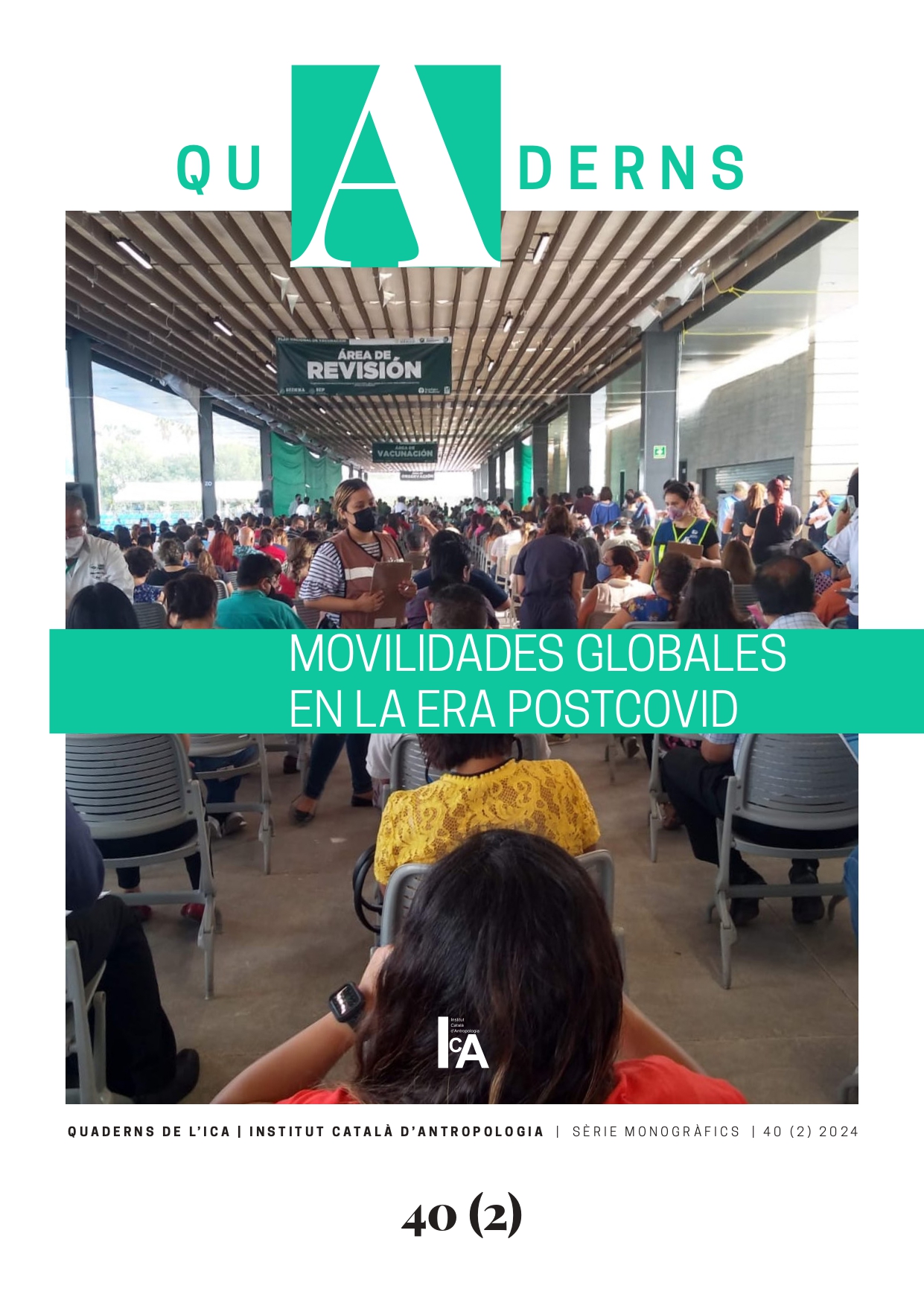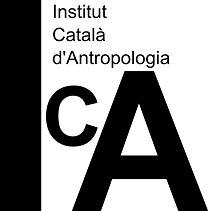Mobility dynamics between Panama and Costa Rica during and after the pandemic: the case of the Ngäbe
DOI:
https://doi.org/10.56247/qua.488Keywords:
Ngäbe indigenous people, pandemic, mobility, women mobility, Panama and Costa Rica, coffee harvestAbstract
Every year thousands of Ngäbe indigenous people from Panamá move from their communities in Comarca Ngäbe-Bugle to agricultural areas of Costa Rica to work temporarily in the coffee harvest. The arrival of covid-19 substantially impacted their mobility, because although the pandemic did not stop them, their journey and stay in Costa Rica were conditioned by changes in the entry requirements and by the new health measures established by the Costa Rican State. Based on the experiences of different Ngäbe families collected in a multi-sited ethnographic fieldwork carried out both at origin and destination, this article presents the main consequences of the pandemic and the consequent regularization of the entry of the Ngäbe workers into the country. On the one hand, the investigation shows the changes in the habitability, health and mobility conditions of this population, and on the other, demonstrates the changes in the mobility patterns of this population, showing a decrease in the women and children mobility. Finally, the continuity of the changes is assessed, reflecting on whether the circumstances experienced were a temporary parenthesis or if, on the contrary, they involved structural changes.
Downloads
Global Statistics ℹ️
|
222
Views
|
90
Downloads
|
|
312
Total
|
|
References
Constenla, A. (1991). Las lenguas del Área Intermedia: introducción a su estudio areal. Editorial de la Universidad de Costa Rica.
Borge, C. (2006). Migraciones indígenas en Centroamérica. Ngöbes: pueblo en movimiento. Ambientico, 149, 8-13.
Bort, J. (1976). Guaymí innovators: A case study of entrepreneurs in a small scale society. (Tesis doctoral, University of Oregon).
Bort, J. y Young, P. (1985). Economic and Political Adaptations to National Development Among the Guaymi. Anthropological Quarterly, 58(1), 1-12. https://www.jstor.org/stable/3317742 DOI: https://doi.org/10.2307/3317742
Cohen, J. y Sirkeci, I. (2011). Cultures of Migration: The Global Nature of Contemporary Mobility. University of Texas Press. https://doi.org/10.7560/726840 DOI: https://doi.org/10.7560/726840
Cortez-Sosa, C. y Méndez-Coto, M. V. (2015). Reconocimiento de prácticas interculturales amigables. Una experiencia en San Vito de Coto Brus. Universidad en diálogo, 5(1), 53-72. https://www.revistas.una.ac.cr/index.php/dialogo/article/view/7491
Fernández, J. (2012). Caso de Costa Rica. En F. Soto y E. Klein (Coords.), Empleo y condiciones de trabajo de mujeres temporeras agrícolas. Food and Agriculture Organization (FAO). https://www.fao.org/4/as122s/as122s.pdf
Gómez, E. (2013). Los Ngäbe-Buglé y su acceso a servicios de salud en Costa Rica como trabajadores temporales. (Trabajo de Fin de Máster, Universidad Estatal a Distancia). https://lareferencia.info/vufind/Record/CR_48db95f3b5b169880e4d234d491a71d9
Guevara, M. y Vargas, J. C. (2000). Perfil de los pueblos indígenas de Costa Rica. Informe final. RUTA/Banco Mundial.
Halbmayer, E. (Ed.). (2020). Amerindian Socio-Cosmologies between the Andes, Amazonia and Mesoamerica: Toward an Anthropological Understanding of the Isthmo-Colombian Area. Routledge. DOI: https://doi.org/10.4324/9781003010487
Ibarra, E. (1999). Intercambio, política y sociedad en el siglo XVI. Histórica indígena de Panamá,Costa Rica y Nicaragua. CIHAC - Universidad de Costa Rica.
Idiáquez, J. A. (2013). En búsqueda de esperanza: migración Ngäbe en Costa Rica y su impacto en la juventud. Servicio Jesuita para Migrantes - Costa Rica, Servicio Jesuita para Refugiados - Panamá.
Instituto Nacional de Estadística y Censo (INEC) Panamá (2023). XII Censo Nacional de Población y VIII de Vivienda 2023.
Le Carrer, C. (2010). Le mouvement du monde. croissance, fécondité et régénération sociale chez les ngobe de Costa Rica et de Panama. (Tesis doctoral, École des Hautes en Sciences Sociales). https://theses.fr/2010EHES0415
Loría, R. (2012). Los límites socioculturales al espacio de recolectores inmigrantes del café. Revista Reflexiones, 91(1), 255-263. https://revistas.ucr.ac.cr/index.php/reflexiones/article/view/1500
Loría, R., Partanen, T., Berrocal, M., Alvárez, B. y Córdoba, L. (2008). Determinants of Health in Seasonal Migrants: Coffee Harvesters in Los Santos, Costa Rica. International Journal of Occupational and Environmental Health, 14, 129-137. https://tinyurl.com/2s47x2xx DOI: https://doi.org/10.1179/oeh.2008.14.2.129
Marín, G. (2004). La población de Bocas del Toro y la Comarca Ngöbebuglé hasta inicios del siglo XIX. Anuario de Estudios Centroamericanos, Universidad de Costa Rica, 30(1-2), 119-162. https://revistas.ucr.ac.cr/index.php/anuario/article/view/1344
Mondol, L. (2018). Espacialidad indígena en la urbe: El caso de los Ngöbe-Buglé en el Gran Área Metropolitana (GAM) de Costa Rica. En J. Horbath y M. Gracia M. (Eds.), La cuestión indígena en las ciudades de las Américas: Procesos, políticas e identidades (pp. 213-230). CLACSO. https://doi.org/10.2307/j.ctvn5tztr.14 DOI: https://doi.org/10.2307/j.ctvn5tztr.14
Morales, A., Lobo, D. y Jiménez, J. (2014). La travesía laboral de la población Ngäbe y Buglé de Costa Rica a Panamá: características y desafíos. FLACSO Sede Costa Rica. http://biblioteca.clacso.edu.ar/Costa_Rica/flacso-cr/20170704051143/pdf_403.pdf
Murillo, J. (2008). Notas sobre la lengua guaymí en Costa Rica. LETRAS, 1(43), 75-90. https://doi.org/10.15359/rl.1-43.5 DOI: https://doi.org/10.15359/rl.1-43.5
Niño, J. C. y Beckerman, S. (Eds.). (2024). Universos chibchas. Nuevas aproximaciones a la unidad y la diversidad humana del área istmocolombiana. Ediciones Uniandes.
Peñuelas, A. (2022). Movilidad indígena transfronteriza en tiempos de pandemia: el caso de los ngäbe y buglé. Diarios del Terruño. Reflexiones sobre migración y movilidad, 13, 213-216. https://www.revistadiariosdelterruno.com/penuelas-penarroya/
Peñuelas, A. (2024). La inmovilidad temporal como factor de cambio en los roles y relaciones de género de las mujeres ngäbe de Panamá. Revista Chilena de Antropología, 49, 1-14. https://doi.org/10.5354/0719-1472.2024.75302 DOI: https://doi.org/10.5354/0719-1472.2024.75302
Sirkeci, I. y Cohen, J. (2016). Cultures of Migration and Conflict in Contemporary Human Mobility in Turkey. European Review, 24(3), 381–396. https://doi.org/10.1017/S1062798716000119 DOI: https://doi.org/10.1017/S1062798716000119
Subinas, J. (2018). Interculturalidad en salud y desigualdad: el caso de las entidades de médicos tradicionales en la comarca Ngäbe Buglé (Tesis doctoral, Universidad Complutense de Madrid). https://eprints.ucm.es/id/eprint/47497/
Vergés, C. y Farinoni, N. (1998). Mujer ngöbe: Salud y enfermedad. Imup, OPS, Universidad de Panamá.
Young, P. D. (1993). Etdebali: un viaje al corazón del pueblo Ngóbe. ACUN.
Downloads
Published
How to Cite
Issue
Section
License
Copyright (c) 2025 Quaderns de l'Institut Català d'Antropologia

This work is licensed under a Creative Commons Attribution-NonCommercial-ShareAlike 4.0 International License.
Distributed under the terms of the Creative Commons Attribution 4.0 International Use and Distribution License (CC BY-NC-SA 4.0)




